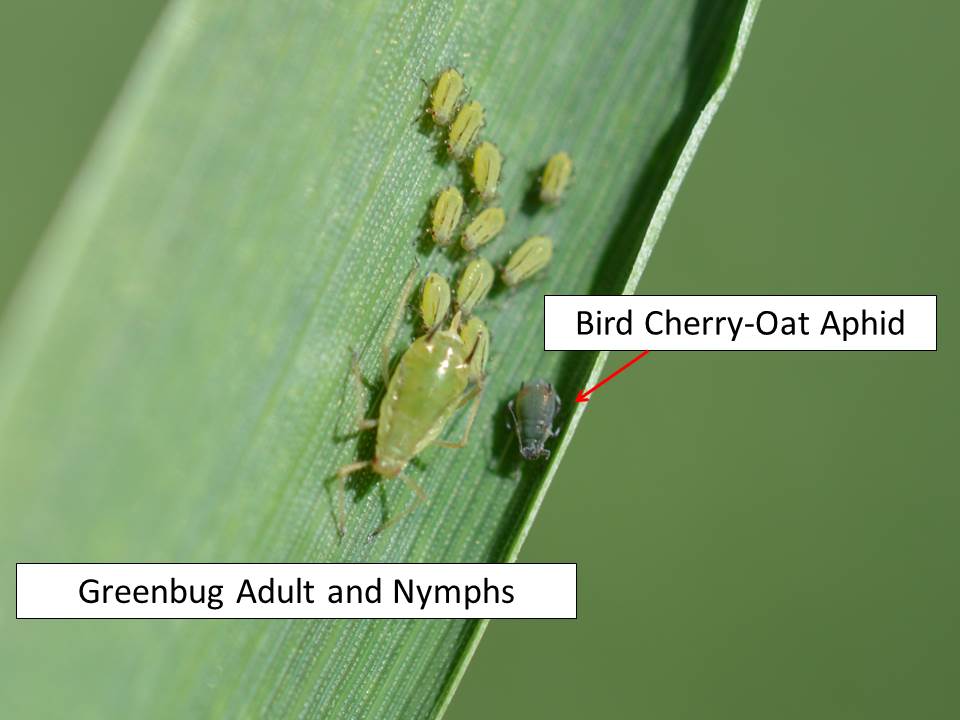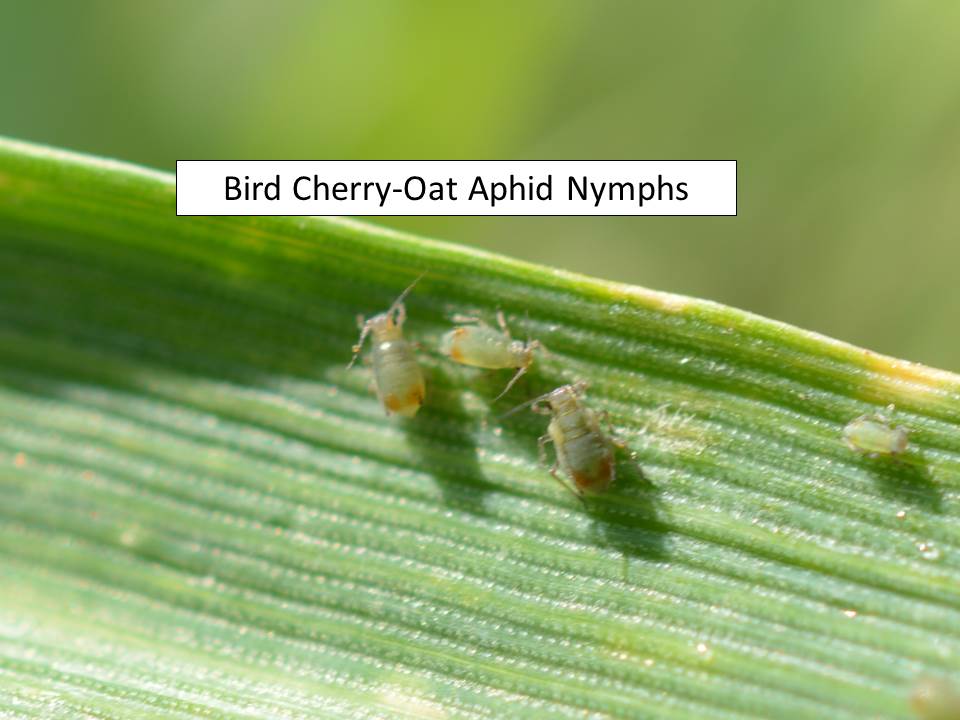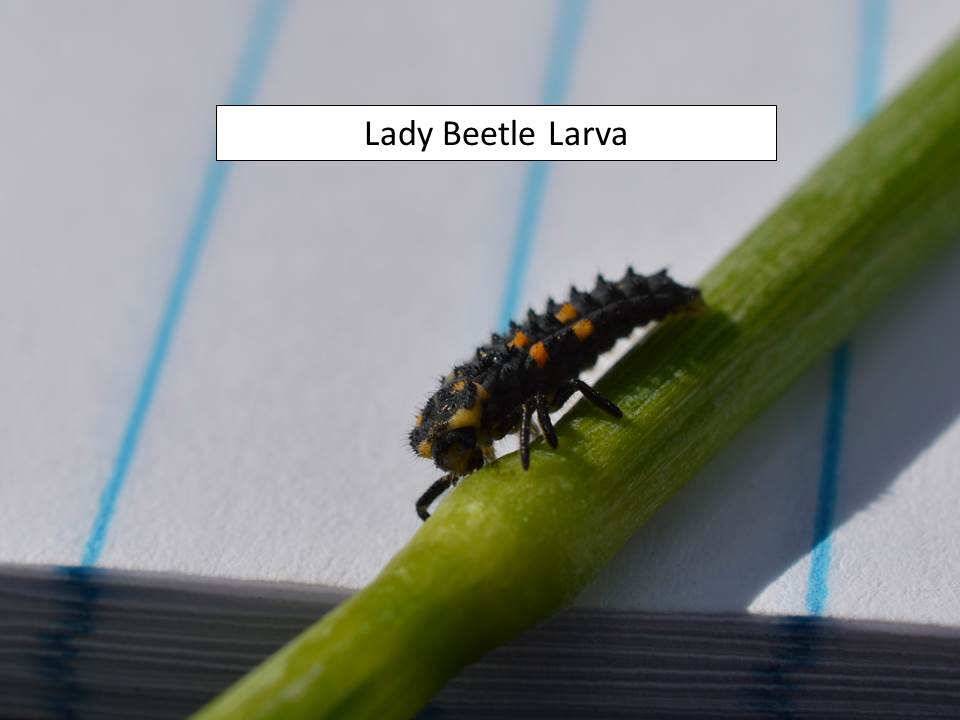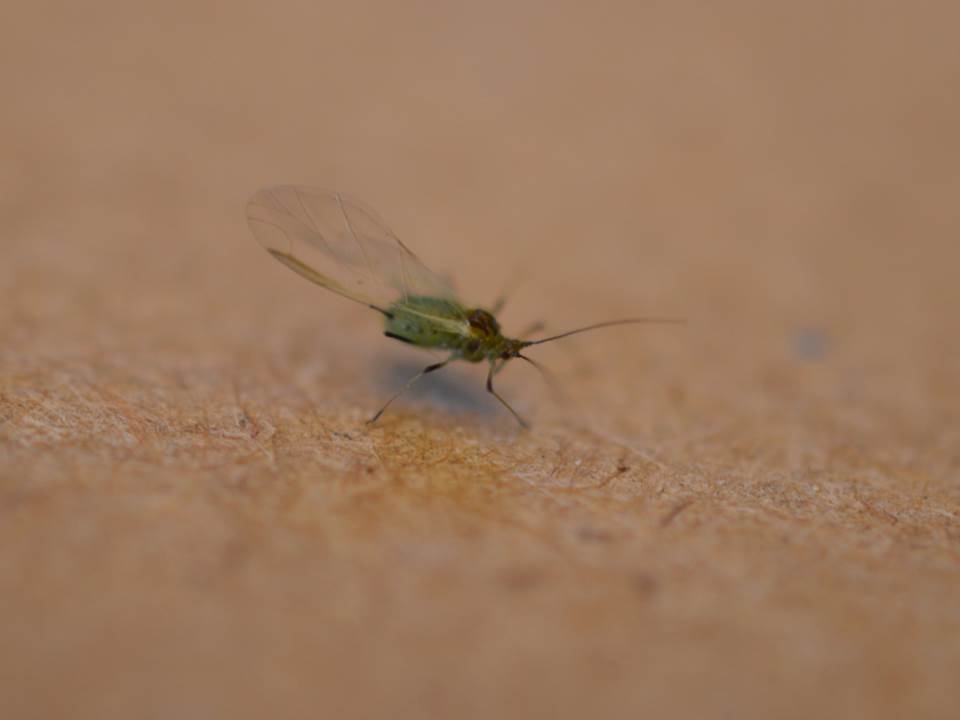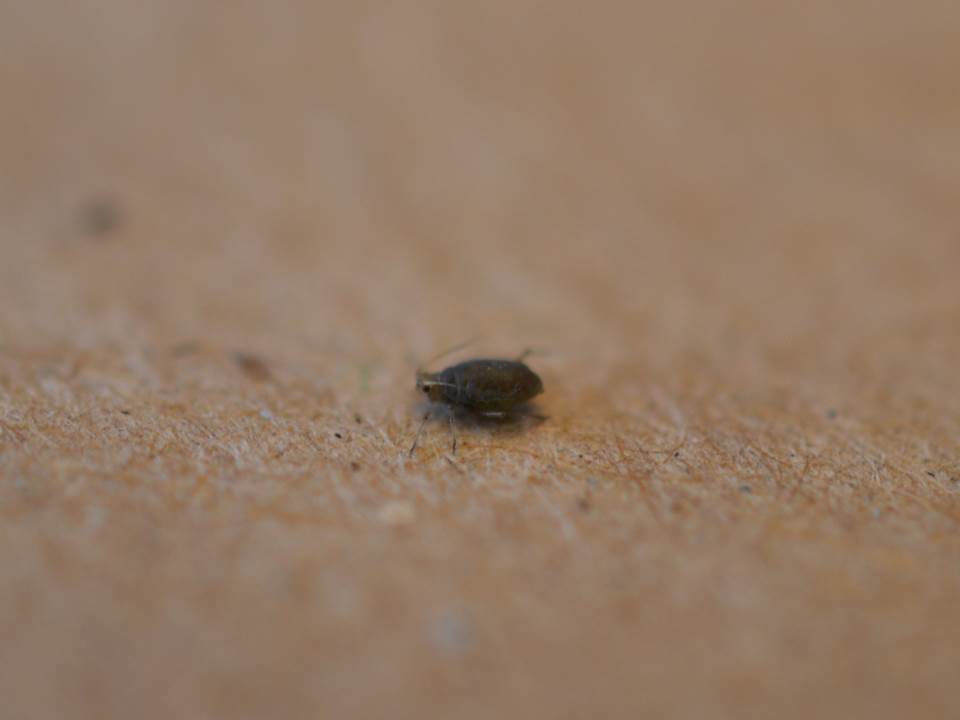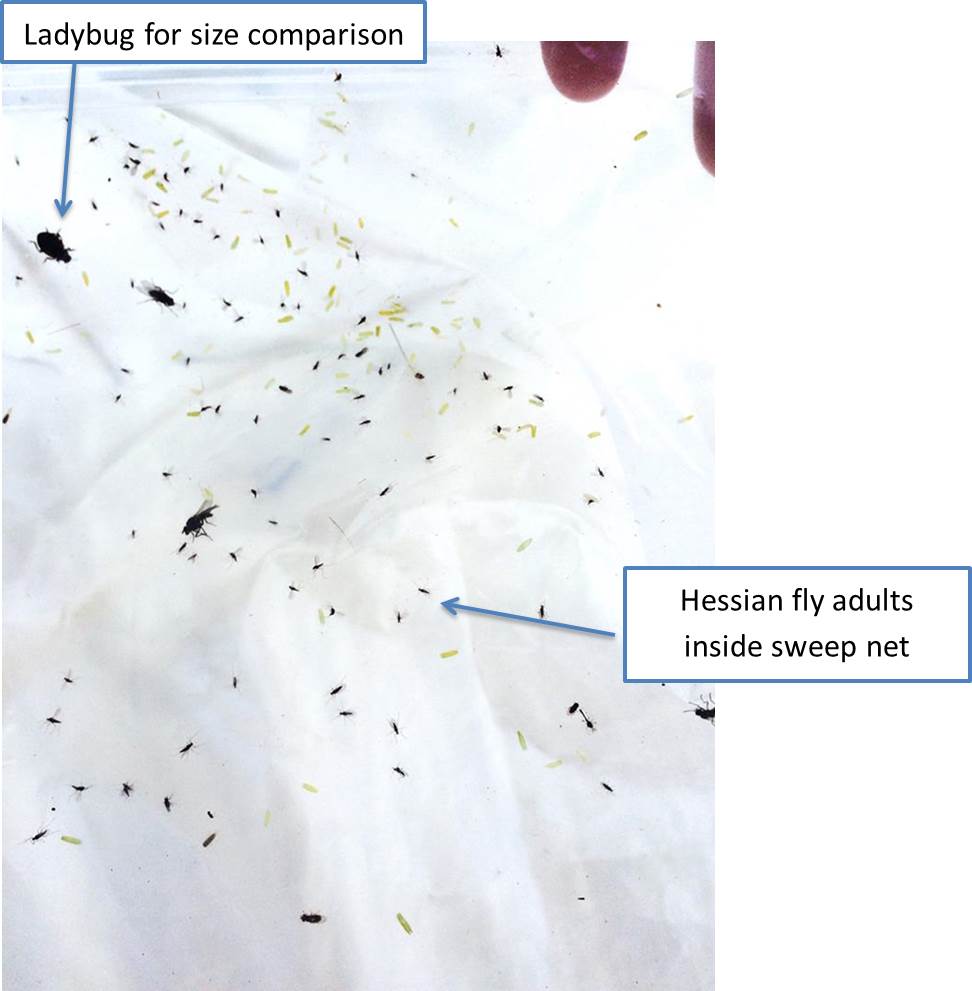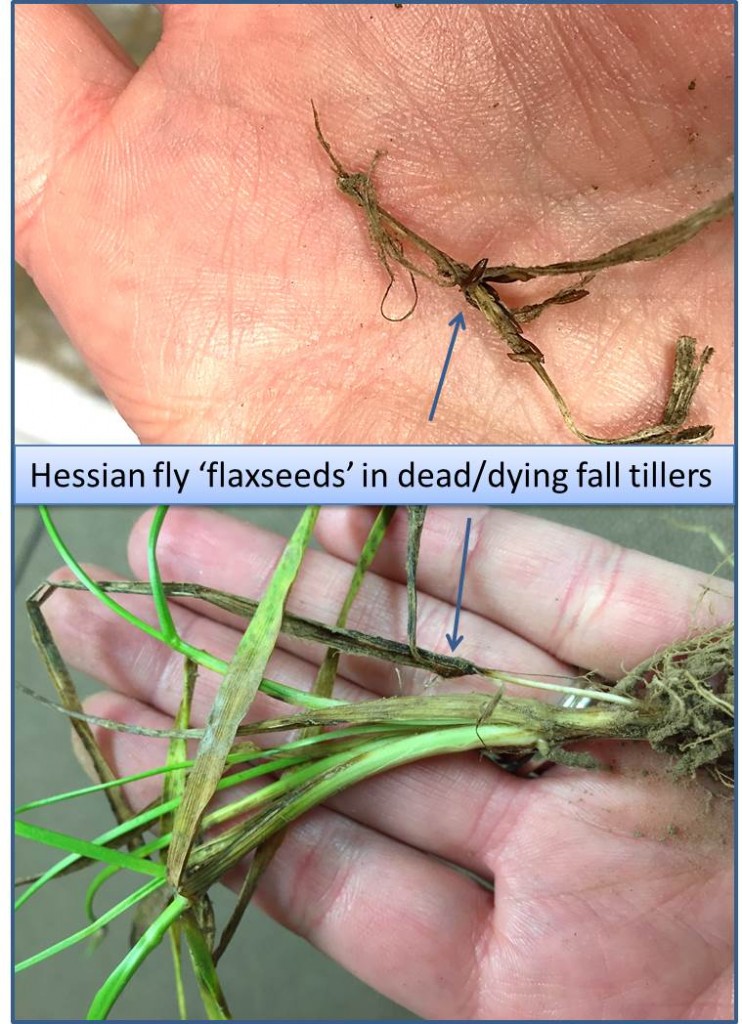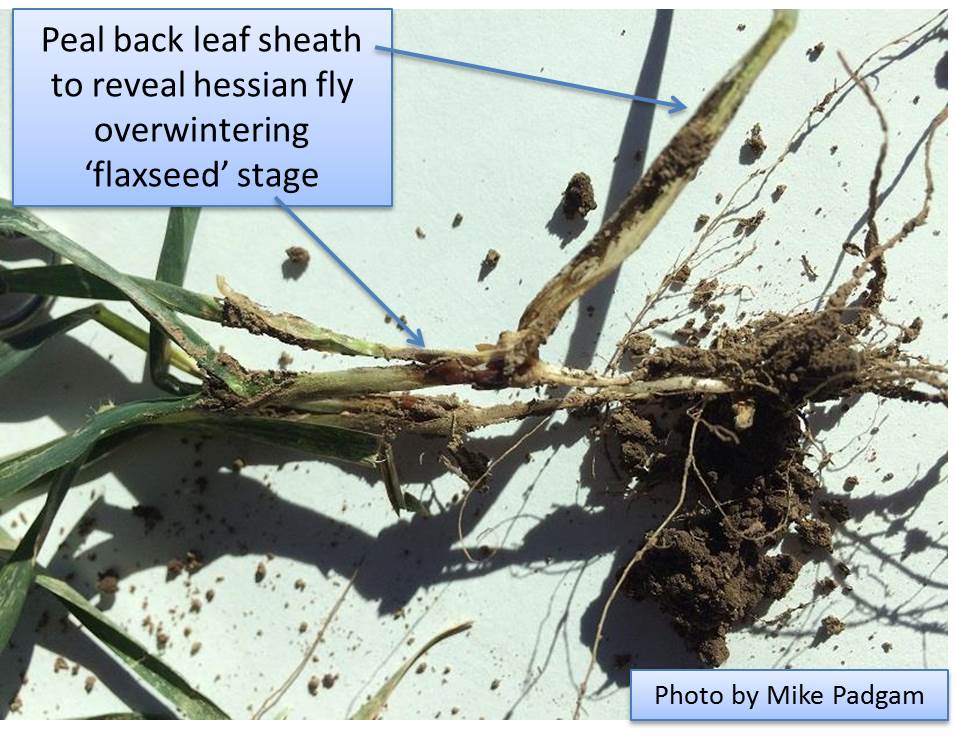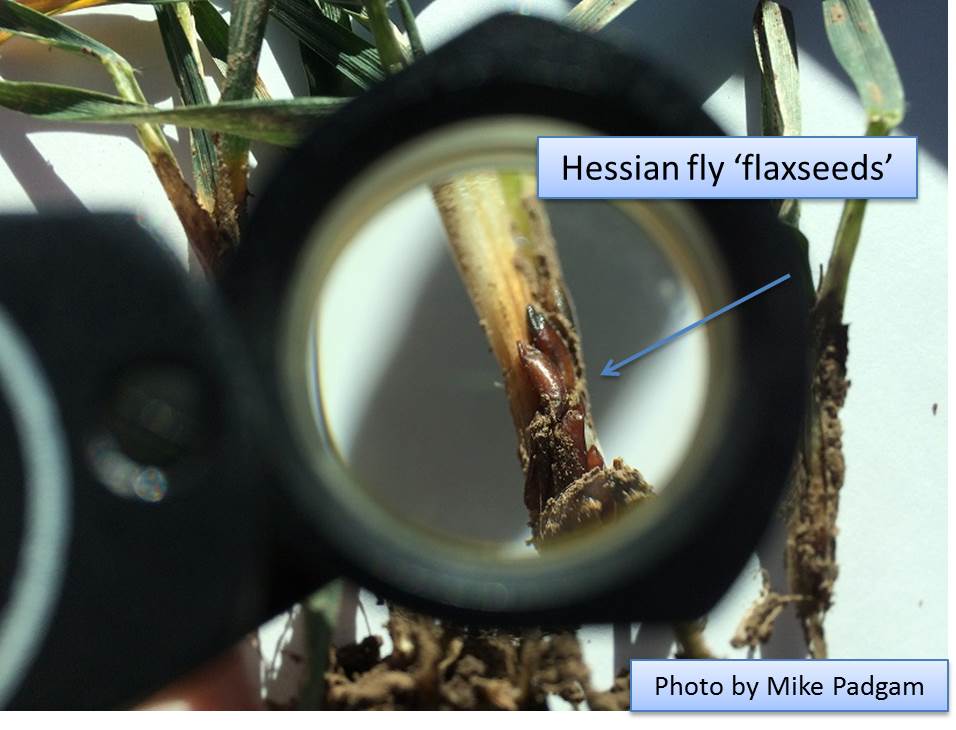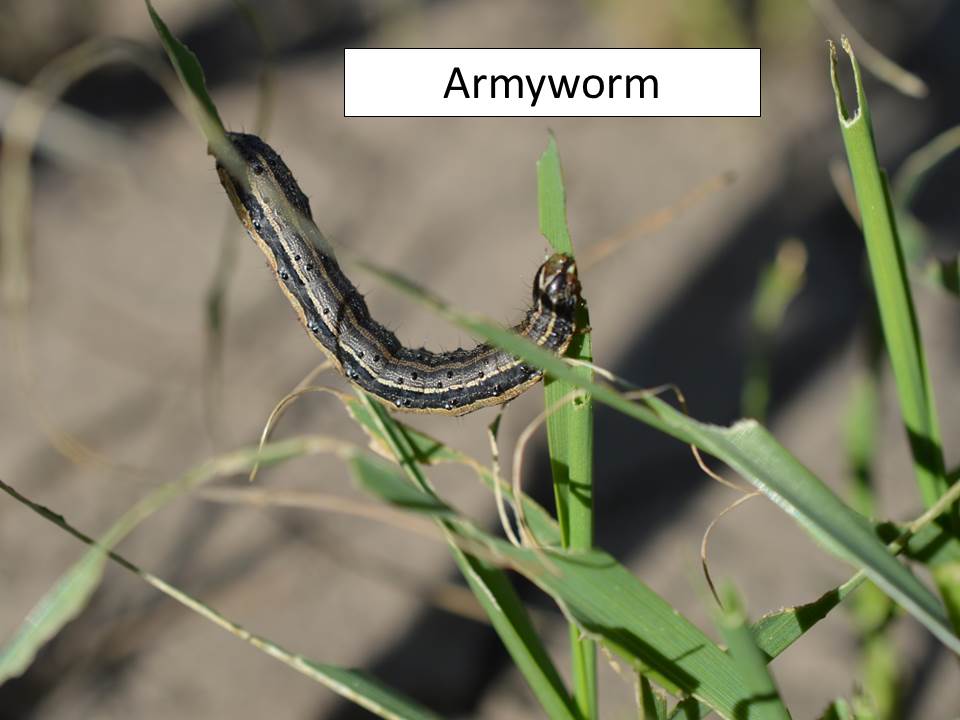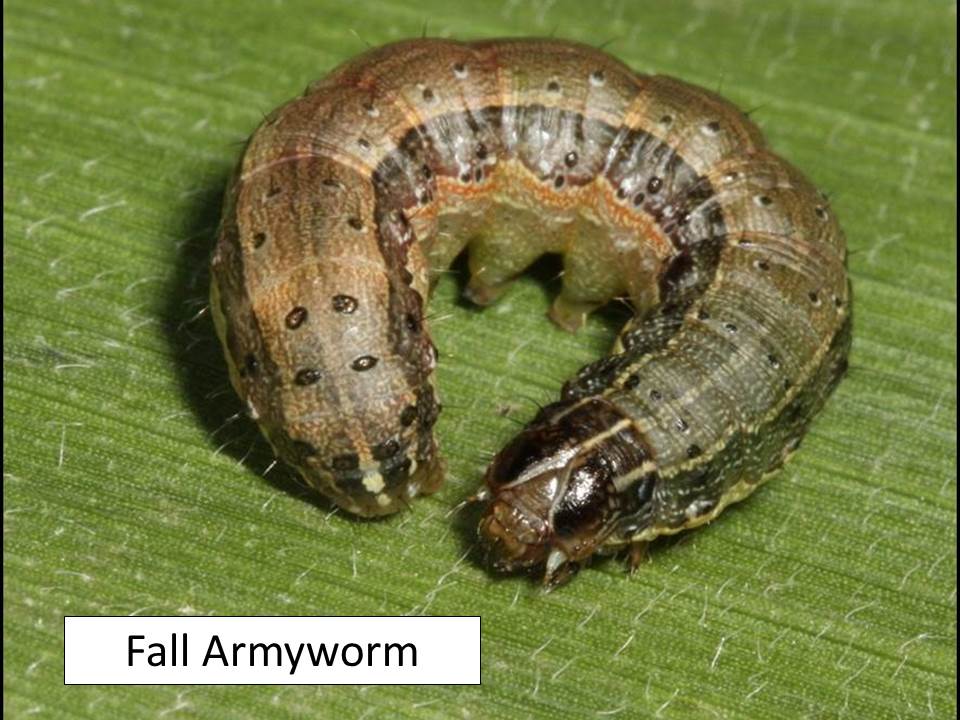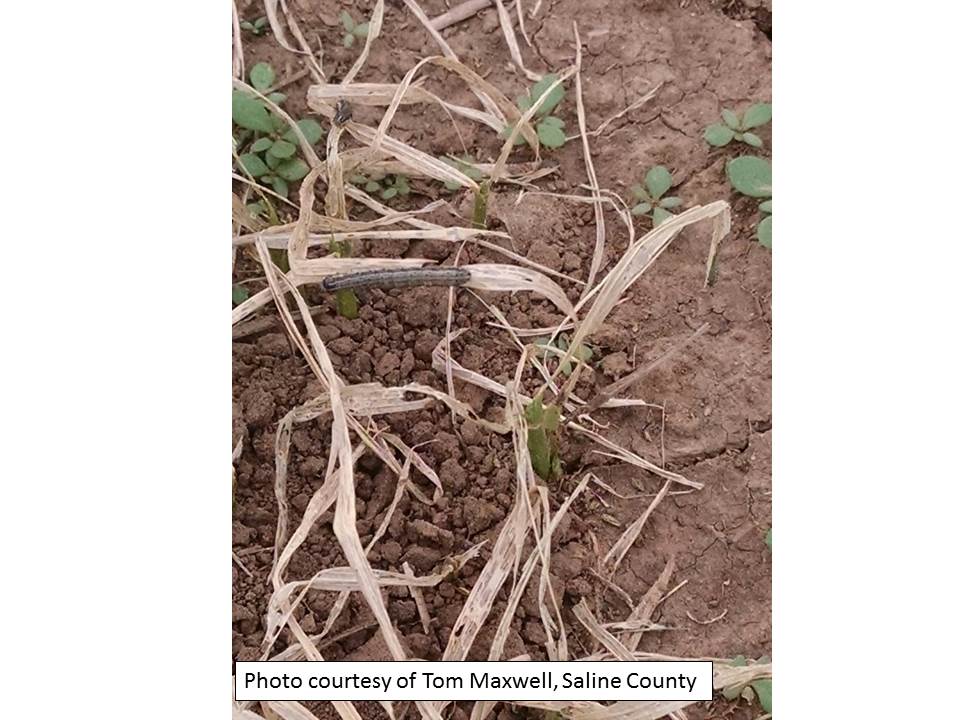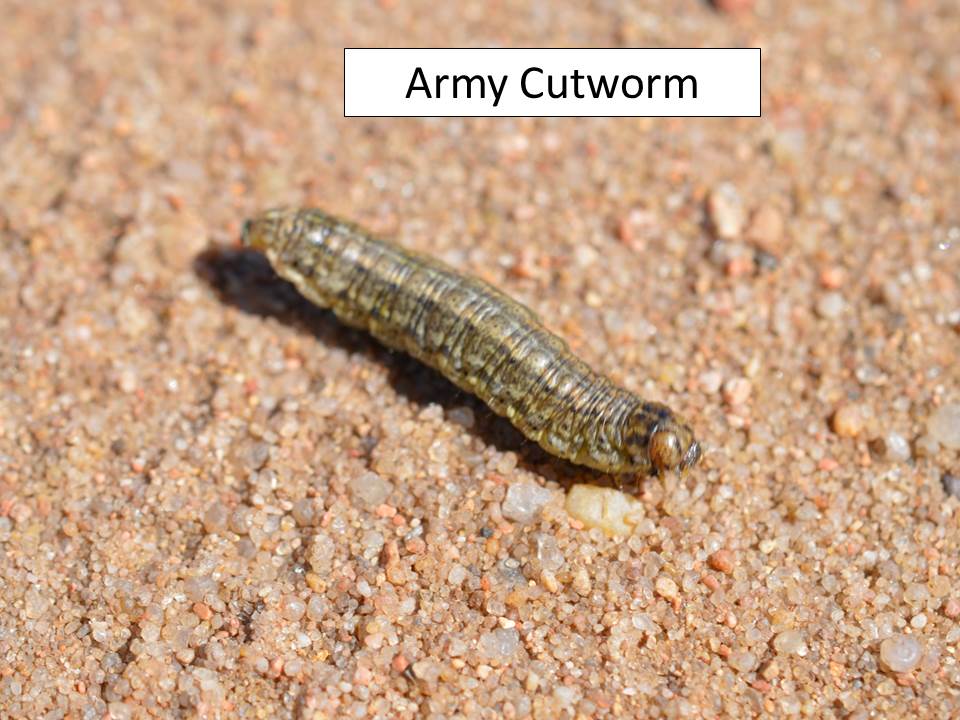–by Dr. Jeff Whitworth and Dr. Holly Schwarting
This time of year there is usually considerable interest in winter grain mites and this year is no exception. A little refresher relative to winter grain mites:
- Adults can be seen by the naked eye, but they are tiny.

- They have dark colored bodies with distinctive red legs and a red spot at the rear of their back, which is an anal pore.
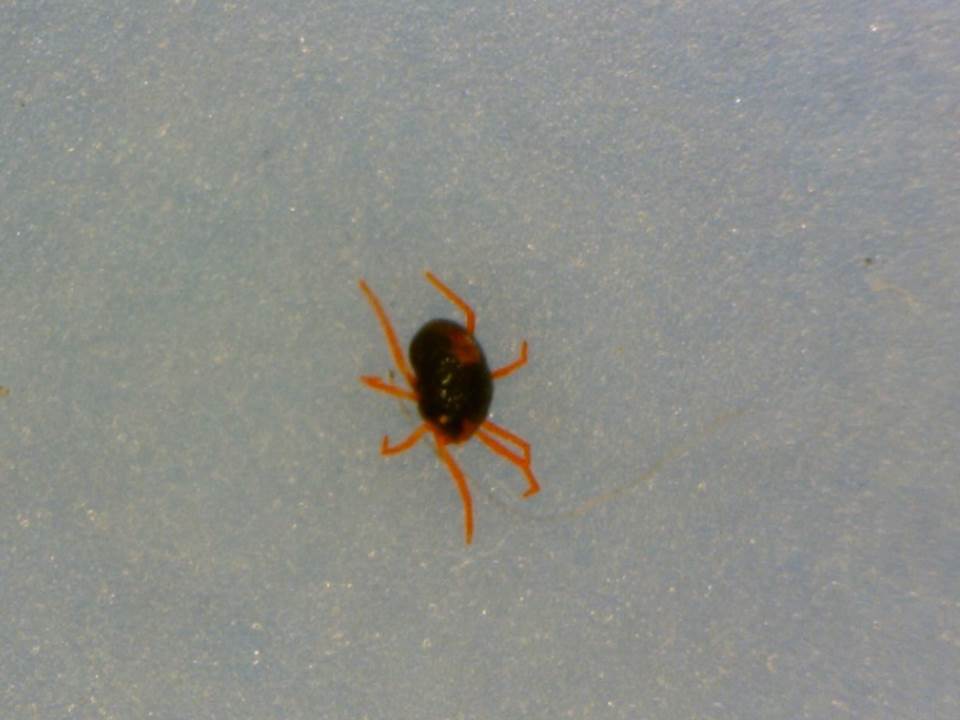
- There are 2 generations per year.
- Adults will be actively feeding in the fall and spring and overwinter and oversummer as eggs.
- This feeding will continue as long as temperatures are cool (not cold), i.e. they are most active from 40°F to 70°F.
Feeding activities usually peak about this time of year and will cease during winter, when temperatures usually are just too cold. This 1st generation deposits eggs in November and December and these eggs will hatch in late February to March. This is about the time wheat is breaking dormancy, thus another time for grower concern. Under dry conditions winter grain mite feeding may cause plants to take on a silvery appearance because mites penetrate individual plant cells and remove the plant juice, resulting in this silvery look. Serious feeding, again in dry conditions, may result in yellowing of plants but, more commonly, just the tips. Under good growing conditions this feeding will not even be noticed. Hot weather causes adult populations to quickly decrease.
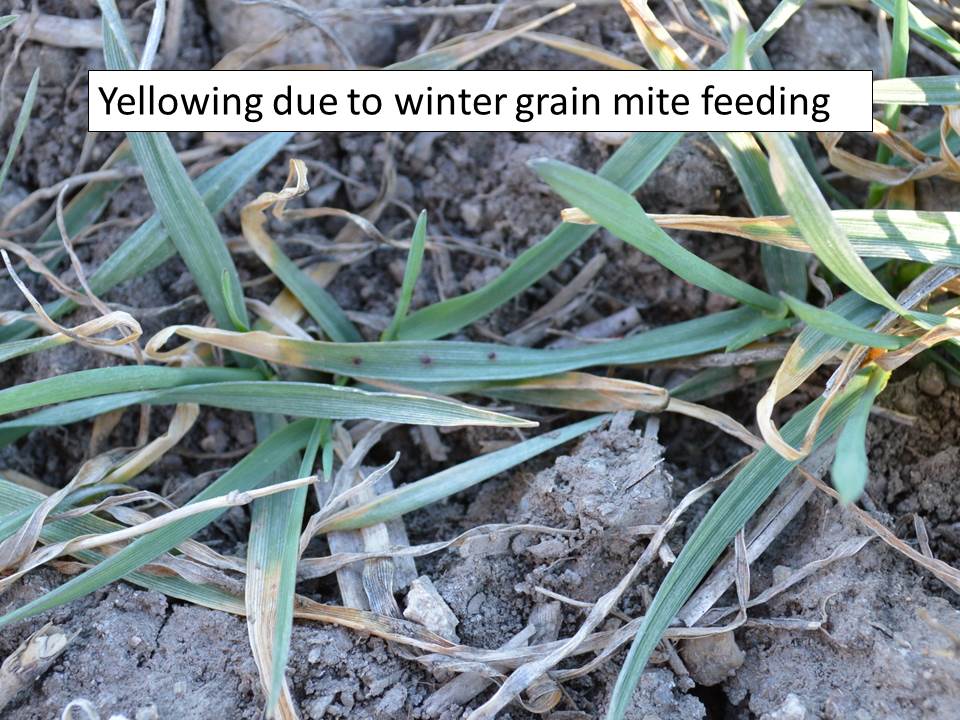
In summary, mite feeding activity will be terminated by cold weather in winter and hot weather in the spring, both of which cause eggs to be deposited into the soil to withstand the unfavorable conditions. Winter grain mite feeding is only noticeable when wheat is under moisture stress, is reversed by adequate moisture, and rarely, if ever, results in any impact on yield.
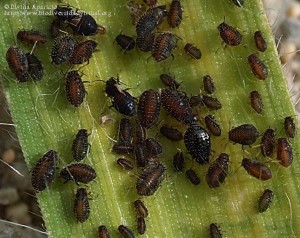 ipha maydis is a new invasive aphid that was recently found in Colorado and could potentially be found in Kansas.
ipha maydis is a new invasive aphid that was recently found in Colorado and could potentially be found in Kansas.